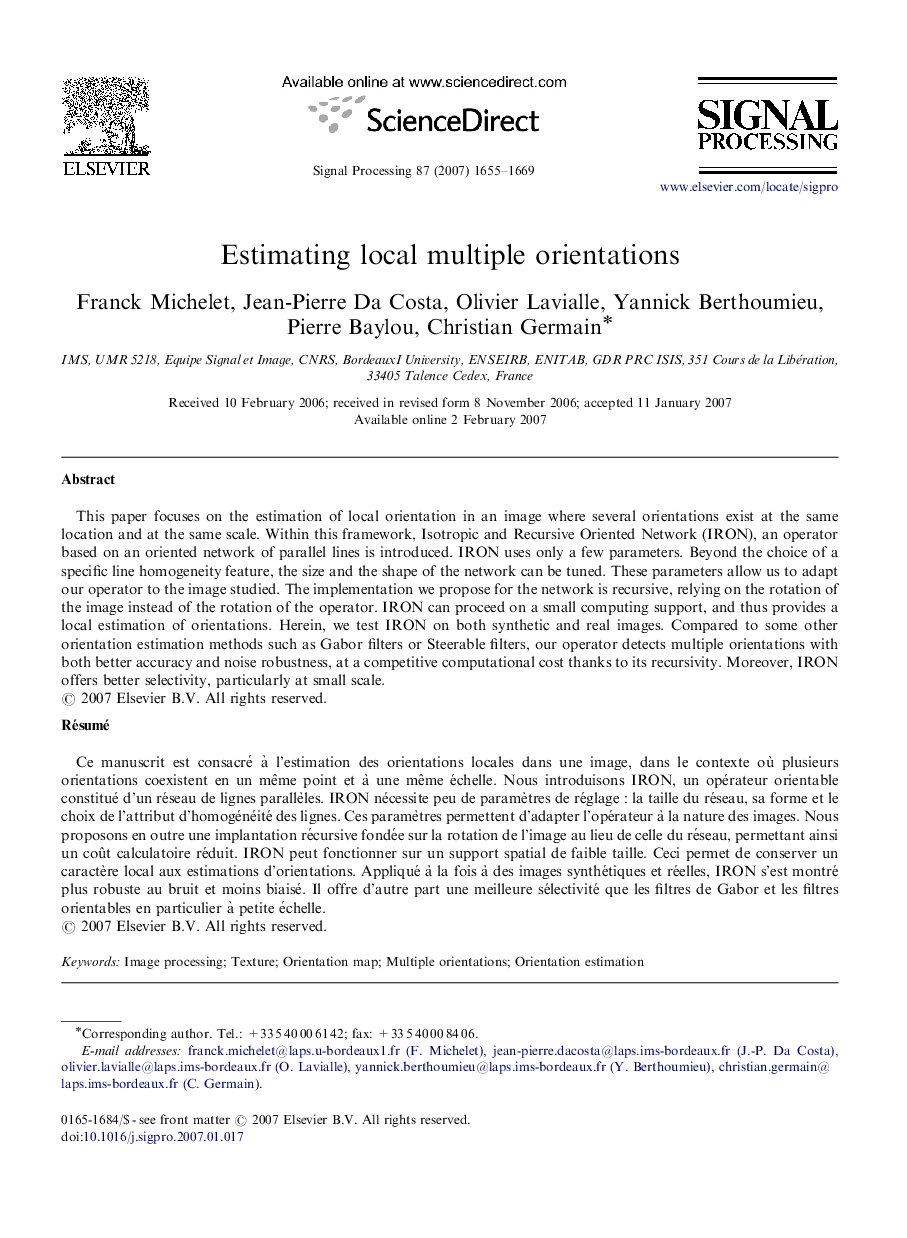| کد مقاله | کد نشریه | سال انتشار | مقاله انگلیسی | نسخه تمام متن |
|---|---|---|---|---|
| 564892 | 875654 | 2007 | 15 صفحه PDF | دانلود رایگان |

This paper focuses on the estimation of local orientation in an image where several orientations exist at the same location and at the same scale. Within this framework, Isotropic and Recursive Oriented Network (IRON), an operator based on an oriented network of parallel lines is introduced. IRON uses only a few parameters. Beyond the choice of a specific line homogeneity feature, the size and the shape of the network can be tuned. These parameters allow us to adapt our operator to the image studied. The implementation we propose for the network is recursive, relying on the rotation of the image instead of the rotation of the operator. IRON can proceed on a small computing support, and thus provides a local estimation of orientations. Herein, we test IRON on both synthetic and real images. Compared to some other orientation estimation methods such as Gabor filters or Steerable filters, our operator detects multiple orientations with both better accuracy and noise robustness, at a competitive computational cost thanks to its recursivity. Moreover, IRON offers better selectivity, particularly at small scale.
RésuméCe manuscrit est consacré à l’estimation des orientations locales dans une image, dans le contexte où plusieurs orientations coexistent en un même point et à une même échelle. Nous introduisons IRON, un opérateur orientable constitué d’un réseau de lignes parallèles. IRON nécessite peu de paramètres de réglage : la taille du réseau, sa forme et le choix de l’attribut d’homogénéité des lignes. Ces paramètres permettent d’adapter l’opérateur à la nature des images. Nous proposons en outre une implantation récursive fondée sur la rotation de l’image au lieu de celle du réseau, permettant ainsi un coût calculatoire réduit. IRON peut fonctionner sur un support spatial de faible taille. Ceci permet de conserver un caractère local aux estimations d’orientations. Appliqué à la fois à des images synthétiques et réelles, IRON s’est montré plus robuste au bruit et moins biaisé. Il offre d’autre part une meilleure sélectivité que les filtres de Gabor et les filtres orientables en particulier à petite échelle.
Journal: Signal Processing - Volume 87, Issue 7, July 2007, Pages 1655–1669